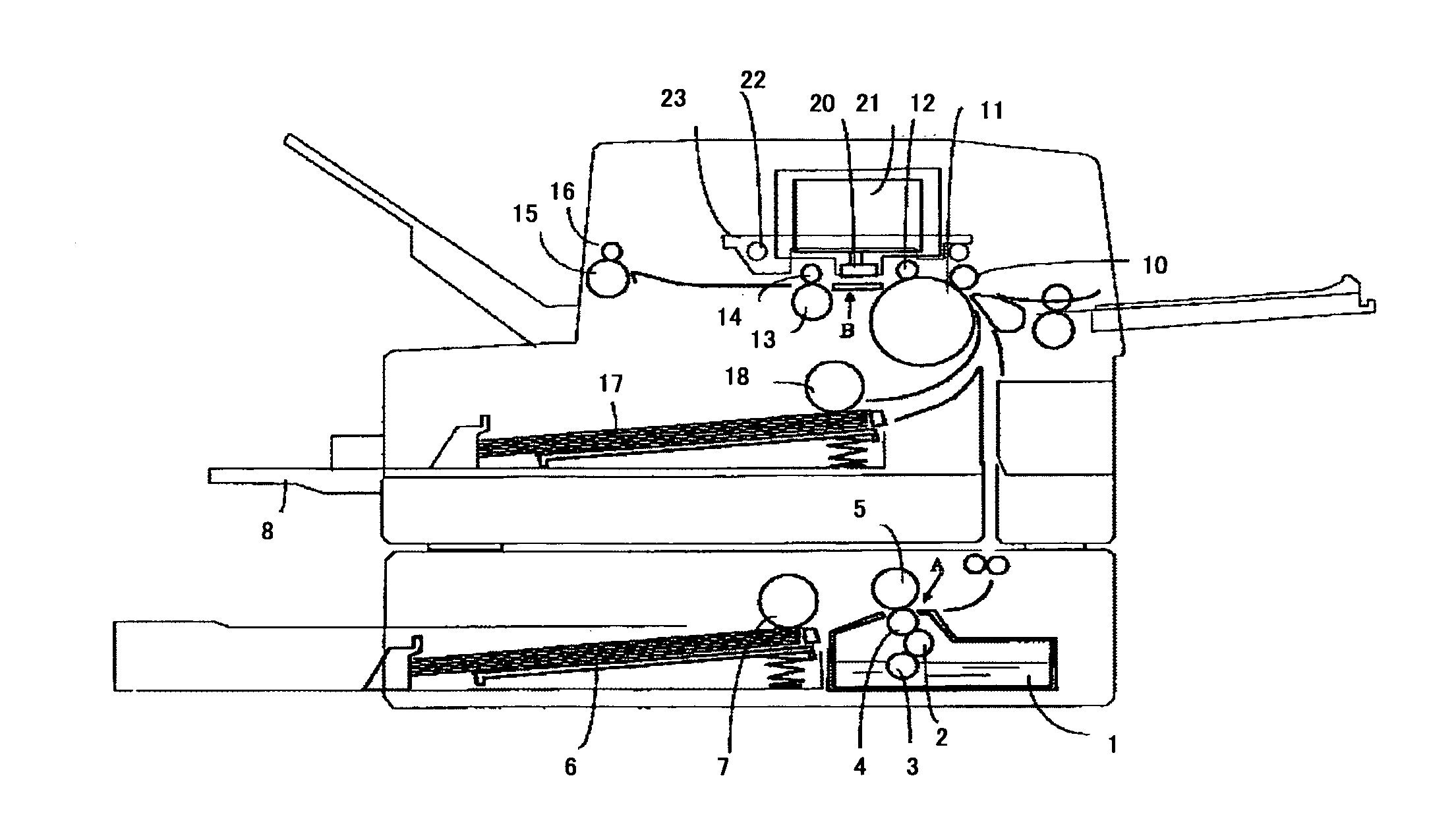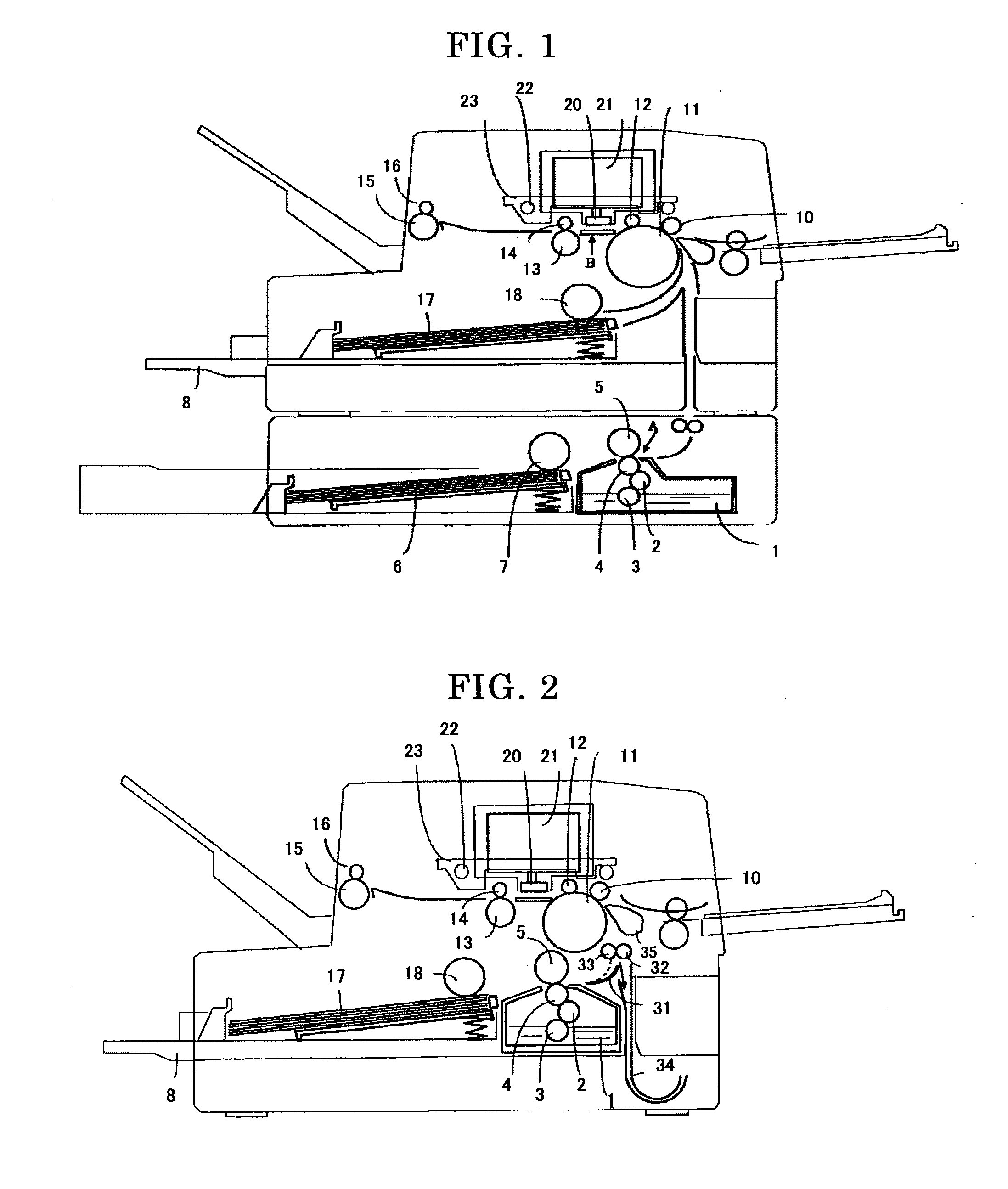Image forming method and image formed record
a technology of image forming and image, applied in the direction of duplicating/marking methods, inks, printing, etc., can solve the problems of reducing image quality, double face printing may not be suitably performed, and affecting the quality of image, so as to achieve excellent image density and color saturation, excellent image quality, and less color bleeding
- Summary
- Abstract
- Description
- Claims
- Application Information
AI Technical Summary
Benefits of technology
Problems solved by technology
Method used
Image
Examples
first embodiment
1) In the first embodiment, the colorant contains a polymer emulsion which is composed of fine polymer particles containing a water-insoluble and / or hardly water-soluble colorant (an aqueous dispersion of fine polymer particles containing a colorant, i.e. resin coated pigment).
second embodiment
2) In the second embodiment, a colorant contains a pigment which has at least one hydrophilic group at its surface and is water-dispersible in the absence of a dispersant (hereinafter, referred to as “self-dispersible pigment”).
[0096]In the present invention, in case of the second embodiment, it is necessary to contain a water-dispersible resin which will be explained below.
[0097]As the water-dispersible colorant in the first embodiment, in addition to the above-mentioned pigments, a polymer emulsion composed of fine polymer particles containing a pigment is preferably used. The polymer emulsion composed of fine polymer particles each containing a pigment is a fine polymer particle in which a pigment is encapsulated and / or a fine polymer particle to the surface of which a pigment is adhered. In such case, all the pigments are not necessarily encapsulated and / or adhered, and the pigment may be dispersed in the emulsion within a certain amount in which the effect of the present invent...
preparation example 1
Preparation of Magenta Pigment-Containing Fine Polymer Particle Dispersion Liquid
[0221]An inside of a 1 L flask equipped with a mechanical stirrer, a thermometer, a nitrogen gas introducing tube, a reflux tube and a dropping funnel was sufficiently replaced with nitrogen gas, then 11.2 g of styrene, 2.8 g of acrylic acid, 12.0 g of lauryl methacrylate, 4.0 g of polyethylene glycol methacrylate, 4.0 g of styrene macromer and 0.4 g of mercaptoethanol were mixed therein, and the temperature thereof raised to 65° C.
[0222]Subsequently, a mixed solution of 100.8 g of styrene, 25.2 g of acrylic acid, 108.0 g of lauryl methacrylate, 36.0 g of polyethylene glycol methacrylate, 60.0 g of hydroxyethyl methacrylate, 36.0 g of styrene macromer, 3.6 g of mercaptoethanol, 2.4 g of azobismethyl valeronitrile and 18 g of methyl ethyl ketone was dropped for 2.5 hours in the flask. After dropping, a mixed solution of 0.8 g of azobismethyl valeronitrile and 18 g of methyl ethyl ketone was dropped for 0...
PUM
| Property | Measurement | Unit |
|---|---|---|
| static surface tension | aaaaa | aaaaa |
| pKa | aaaaa | aaaaa |
| static surface tension | aaaaa | aaaaa |
Abstract
Description
Claims
Application Information
 Login to View More
Login to View More - R&D
- Intellectual Property
- Life Sciences
- Materials
- Tech Scout
- Unparalleled Data Quality
- Higher Quality Content
- 60% Fewer Hallucinations
Browse by: Latest US Patents, China's latest patents, Technical Efficacy Thesaurus, Application Domain, Technology Topic, Popular Technical Reports.
© 2025 PatSnap. All rights reserved.Legal|Privacy policy|Modern Slavery Act Transparency Statement|Sitemap|About US| Contact US: help@patsnap.com



